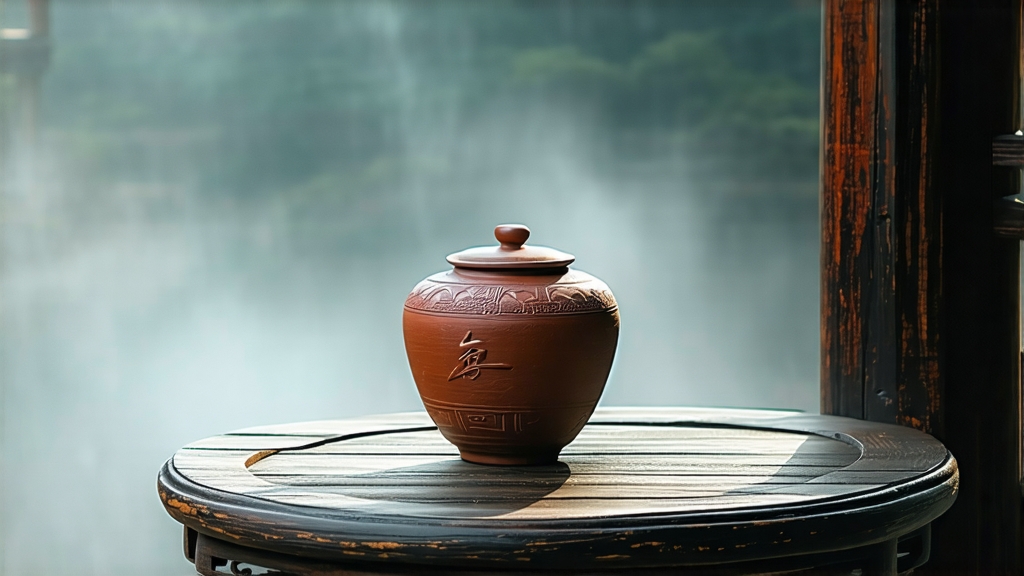
Tucked away in the subtropical mountains of southern China, Liu Bao tea has spent four centuries quietly fermenting while its more famous cousin, Pu-erh, stole the international spotlight. Yet for those who venture beyond the well-trodden paths of Yunnan, Liu Bao offers a darker, deeper portal into the soul of Chinese post-fermented tea. Its liquor glows like burnt mahogany, its aroma carries the unexpected scent of betel nut and damp camphor, and its finish lingers with the minerality of limestone caves. To understand Liu Bao is to listen to a tea that speaks in the dialect of traders, river coolies, and overseas diasporas who once carried it across the South China Sea in bamboo baskets lined with banana leaves.
Historical currents
The story begins in the small town of Liu Bao, Wuzhou prefecture, Guangxi, where the confluence of the Xun and Gui Rivers created a natural wharf during the Ming dynasty. Compressed dark leaves were loaded onto flat-bottomed boats and floated down to Guangzhou, then onward to Hong Kong, Malaysia, and Indonesia. Laborers in the tin mines of Kuala Lumpur discovered that the tea soothed dysentery and cooled the body in equatorial heat; Peranakan brides used it to rinse their hair for extra shine. By the late Qing, Liu Bao had become a currency of migration: one basket could pay a sailor’s passage, and the same tea appreciated in value as it absorbed the salt and spice of ocean air. When the overland Tea Horse Road declined, Liu Bao’s maritime Silk Road kept the embers of dark-tea culture alive.
Micro-terroirs within one name
Although “Liu Bao” is a protected geographical indication, the hills around Wuzhou contain at least three distinct micro-terroirs. The highest, known as Tang Ping, sits at 800 m among granite outcrops; spring mists slow photosynthesis, yielding buds rich in theaflavins that later translate into rose-cocoa top notes. Middle-elevation Da Shan offers lateritic red soil where ancient Camellia sinensis var. sinica bushes develop thick leaves ideal for wet-piling; their infusions carry a signature betel-nose aroma prized by Malaysian collectors. Finally, the lowland village of He Jie produces a bolder, tar-thick style once favored by dockworkers who needed a tea that could stand up to evaporated-milk tea stalls. Today these sub-styles are blended or kept separate according to market demand, giving Liu Bao a range that rivals the Burgundy of France.
From leaf to basket: the craft
Plucking starts in late April when three leaves and a bud reach the size of a sparrow’s tongue. The first twist of uniqueness occurs during sun-withering: leaves are spread on bamboo screens angled toward the west so that the declining sun caramelizes the edges without over-oxidizing the center. A short 30-min fixation in a wok at 180 °C kills green enzymes, yet the leaves retain enough moisture for the crucial wet-piling phase. Here Liu Bao diverges from Pu-erh: instead of a 40- to 60-day pile, Liu Bao is heaped for only 10–14 days in rooms lined with native Chinese fir. The shorter pile preserves a sweeter core while still encouraging the growth of Eurotium cristatum, the same yellow mold that later blooms on fu-brick tea. Every 48 h the pile is turned by barefoot workers who judge temperature with the backs of their knees—when the heap feels like a fevered forehead, it is time to restack. Once the inner leaf stem snaps cleanly, the tea is sun-dried again, then steamed soft and pressed into 50 kg bamboo baskets lined with wild banana leaves. A final steam bath tightens the weave, creating the iconic “big bamboo belly” that allows micro-oxygenation during decades of aging.
The alchemy of time and humidity
Traditional storage follows the “upper floor, lower kitchen” model: baskets are stacked above the cooking hearth so that rising smoke and ambient heat maintain 70–80 % relative humidity. In this subtropical sauna, the tea contracts and expands like a lung, inhaling the resinous aroma of fir and exhaling volatile geosmin that smells of petrichor. After three years the outer leaves turn seal-brown while the core remains chestnut; after fifteen the entire cake glints with golden mold spores, and the liquor acquires a jujube-s